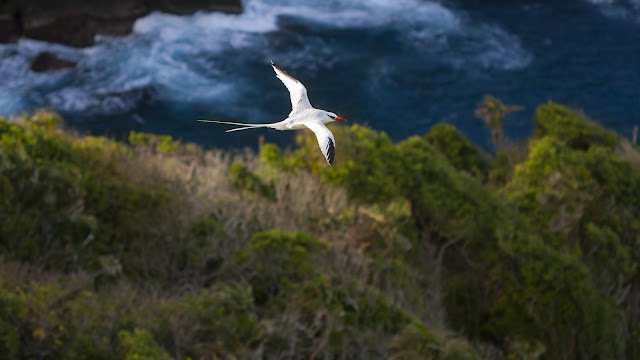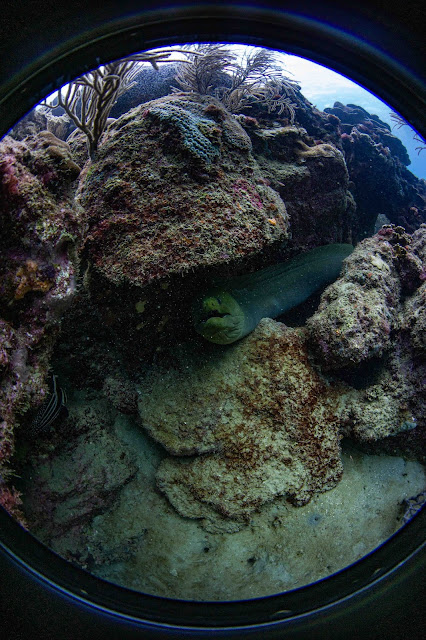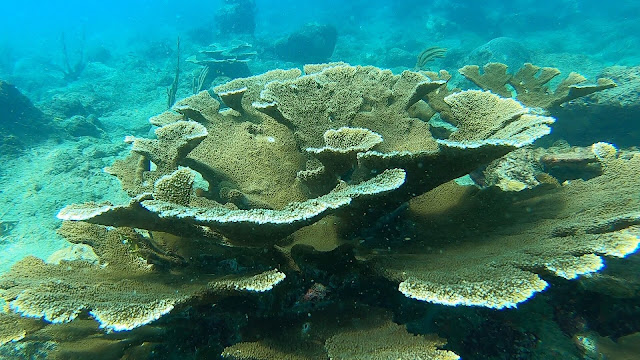10,000 hours by the sea
Dr Anjani Ganase, marine biologist and coral reef scientist, begins a series on her early adventures by the sea. In this episode, she gets tumbled by the waves and learns the rhythm of the water. Children should spend time at the beach over the long vacation, with adults who love the sea.

Anjani vs the waves. Photo by
Ranji Ganase
 |
| Wild waves of Blanchisseuse. Photo by Pat Ganase. |
My first barrel roll
I remember my first tumble by a wave, feet flying overhead, water up the nose, eyes are burning. Of course, this was Maracas, our beautiful North Coast beach known for its wild water. I was jumping over the surf but every now and then a big wave comes through. You can either retreat to the shore to be taken out in the attempt, or swim up its face only to be barrelled either way. Timing was everything, but I could never be faster than the big wave. The tumbles underwater seem endless before a hand from above grabs me and pulls me out of the wave by my leg. I am dangling upside down, as my father rescues me from the wave. I am able to breathe again and get put upright, then I head back in to battle the waves. Sometimes the waves hit you hard enough and that makes you take a break on the sand.
As I got older and faster, my timing got better. We would body surf the wave, which for me meant that I would be tossed head first. This wasn’t my thing. I preferred to dive under the wave just as it is about to crash. I would open my eyes underwater to see the wave barrel and whirl above my head pulling everything along with it. I learned to dig into the sand below and kick to escape the wave.
My parents made sure I learned to swim in a pool. At least that’s what I was told; that my father threw me into my aunt’s pool as a baby. I took the opportunity without fear, because my father knew how to swim. I wore inflatable wings for a while, but they didn’t last long. I remember wrapping my arms around my father’s neck, while he dived and swam underwater. If I ran of air before he surfaced, I simply let go and pushed my way up, grabbed a breath and then went down again. There was always so much to see around me, but I was most interested in the water itself. How it splashed, how my bubbles buoyed, how it hurt my ears when I tried to dive deeper, and how it flattened my sand castles.

Cannonball jellyfish. Photo by
Hannah Lochan
Underwater Creatures
Back then, I still felt that the ocean was another world. Digging my toes in the sand underwater, I felt so many sand dollars in the layer under the sand. I would grab them up with my toes, and bring them up to inspect. The underbody of the sand dollar was covered with tiny wriggly hairs, such symmetry, but no eyes or face. On occasion, the North Coast waters were clear. I remember Tyrico on a particularly calm day, the water was calm and drifting about us were cannon ball jelly fish. My parents did not fear them, and neither did I. My dad would pick one up and throw it, so I did the same. The outside wouldn’t sting me, he said and the stinging tentacles were mild, but enough to do some wickedness. The other marine creatures I was exposed to, were those that my grandfather caught for food. He would throw a line over the side of the boat to see what he would catch. Sometimes he would bring a bucket of squid, and we learned to clean and cook squid. Everything in the sea is good to eat, he would say. On Manzanilla beach, we would quarry the sand for chip chip. Sometimes we dug sea cockroaches, what I now know as mole crabs.
My grandfather would go snorkelling on the reef near Scotland Bay, “down de islands,” off Trinidad’s northwest peninsula, and eventually he allowed me to come with him. He towed me on my boogie board. He swam and I lay on my belly, my mask on my face to look into the water. I remember seeing an eel and fish. It was indeed another world that I was peeking into, but it was a curious world that I wanted to explore.

No Man’s Land, Buccoo Marine
Park. Photo by Pat Ganase Calm beaches of Pigeon Point.
Photo by Pat Ganase
During my teenage years, I swam competitively. I attempted to learn to surf, and realised that it was not for me but I did enjoy kayaking. It wasn’t until I had to go to university that my formal interaction with the ocean began. I still didn’t know what I wanted to do for my living, except I had a keen interest in the sea, so applied to study marine biology in Florida Institute of Technology, a small university. I did apply to two prestigious liberal arts colleges but I was rejected. Of course, I was very sad to be rejected. But it turned out to be a clear direction, the best and only option for me. It was the beginning of my journey to becoming a marine scientist.
The beginning of my 10,000 hours by sea was not structured but sentient. It was completely instinctive to follow the feeling of freedom, family and living on islands. Later, I realised that living between land and sea, which I took for granted, was something that less than 1 % of the world experiences. My life story has also led me to understand that the ocean is essential to our islands. We need to love the sea around as much as we love Tobago and Trinidad, and protect it.

Kayaking in Charlotteville. Photo
by Pat Ganase



